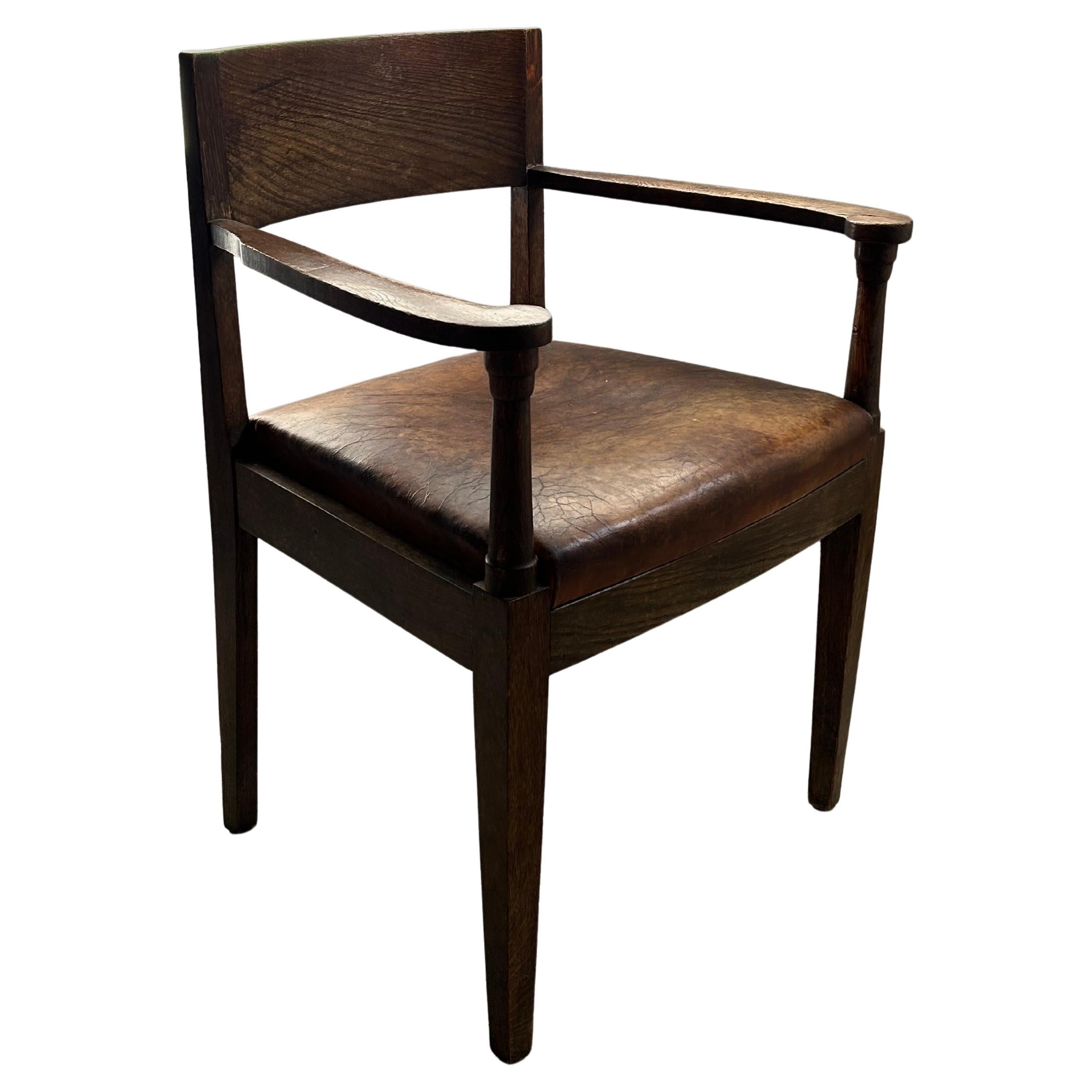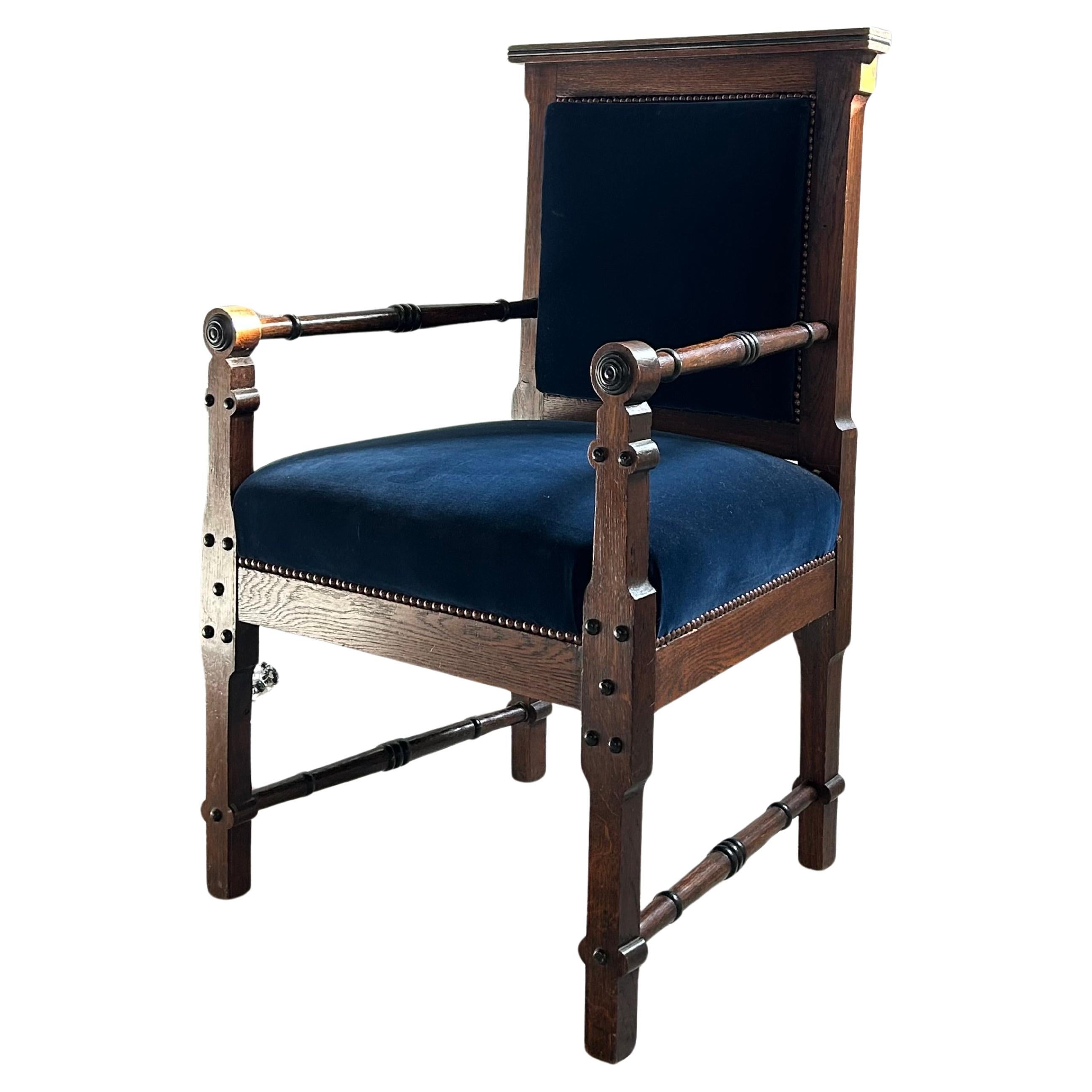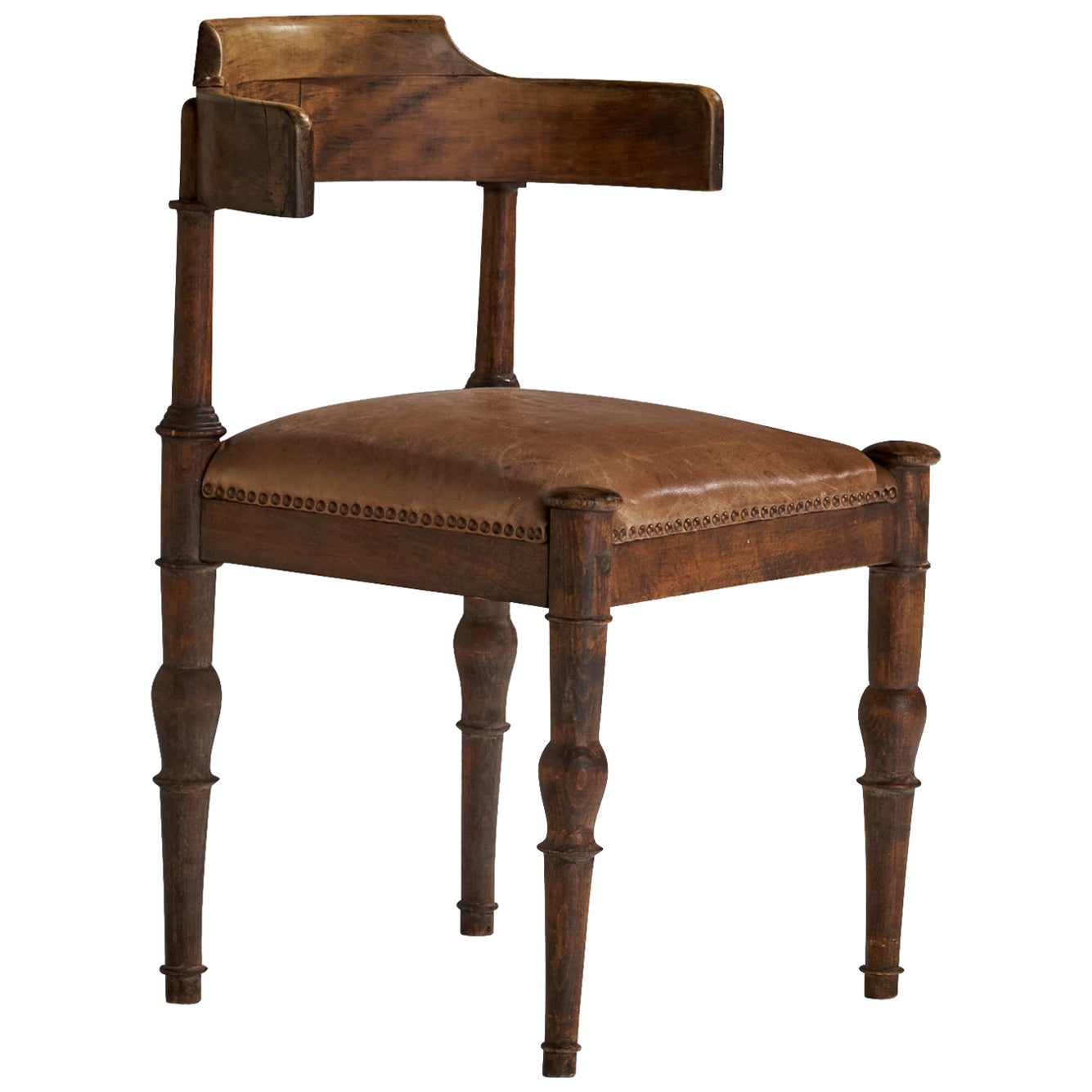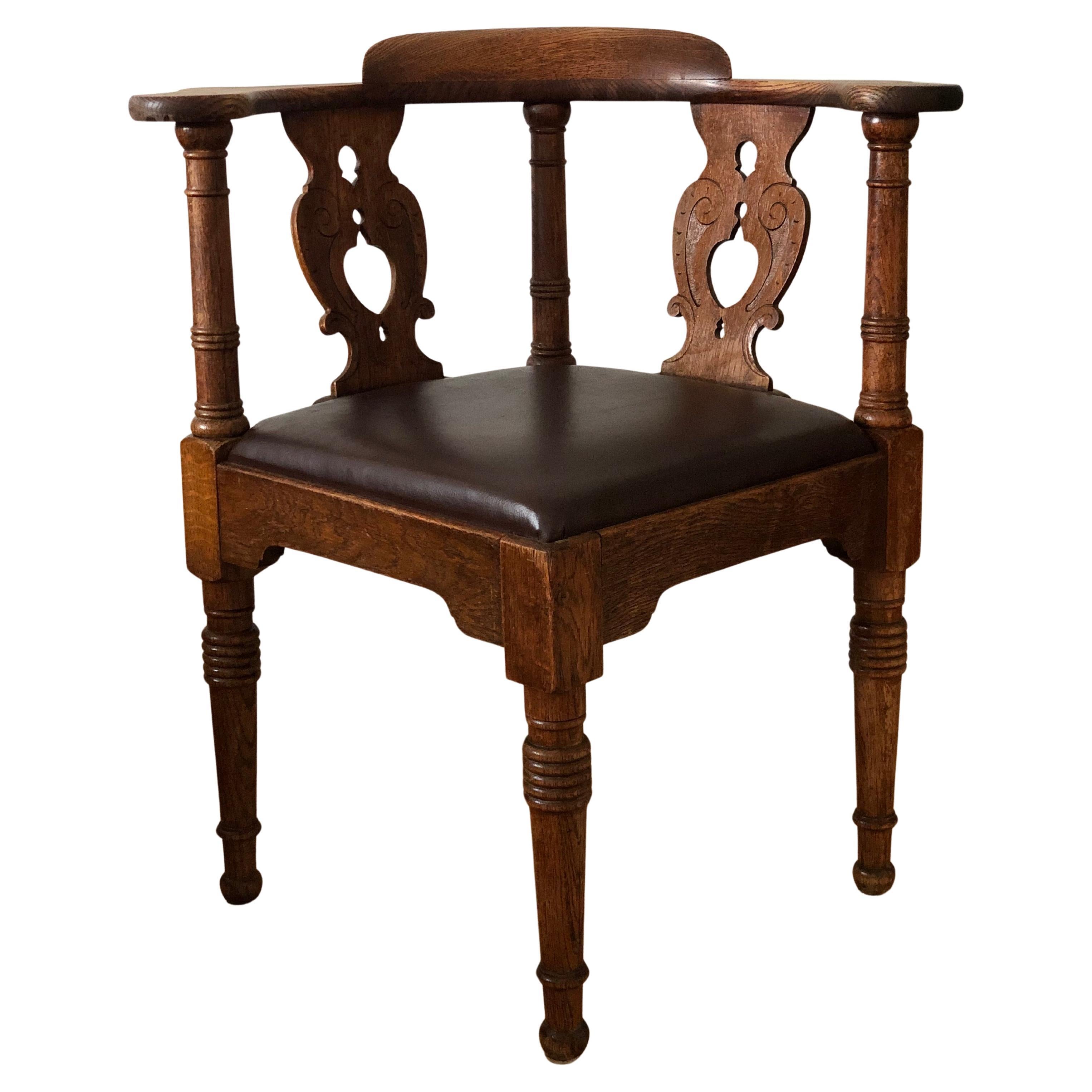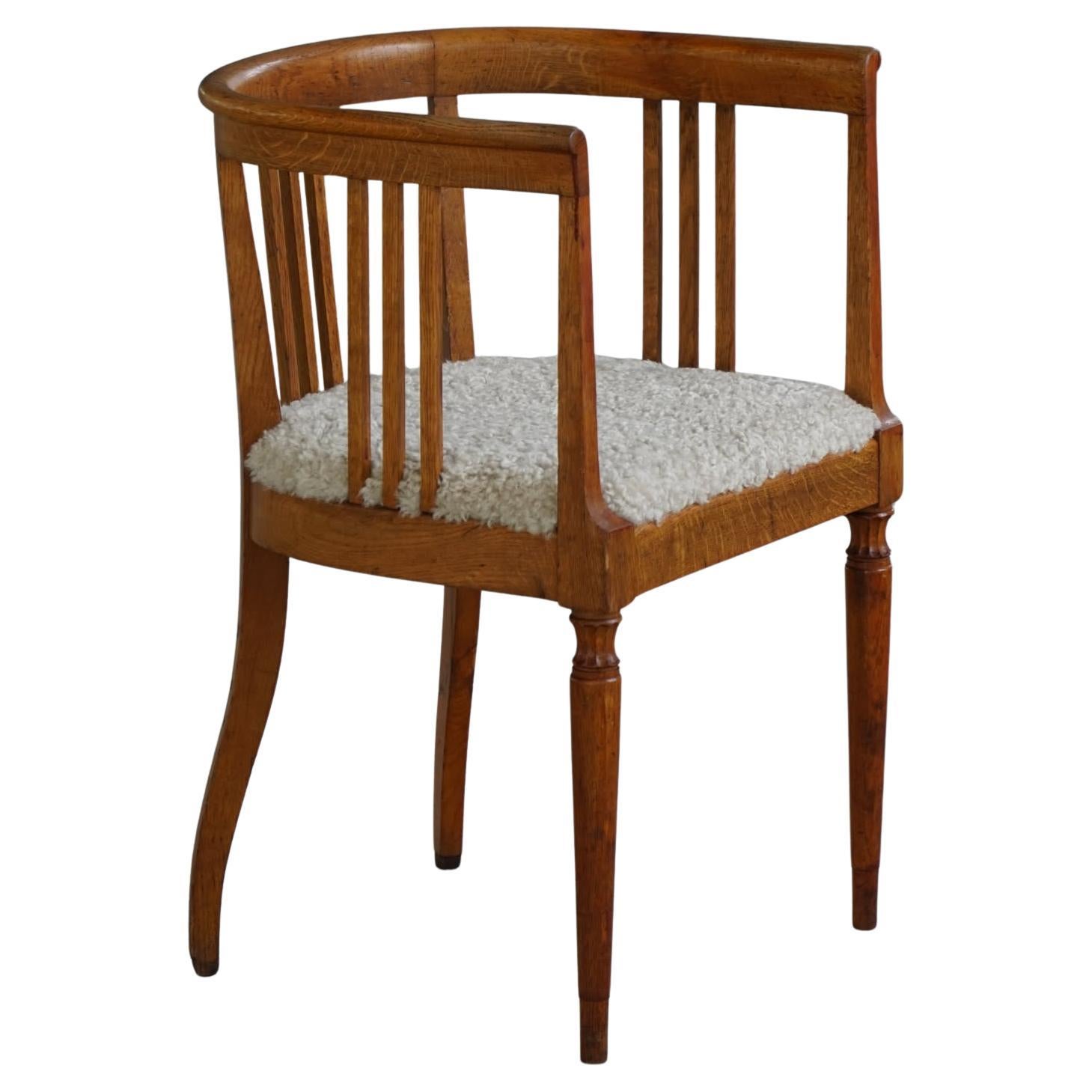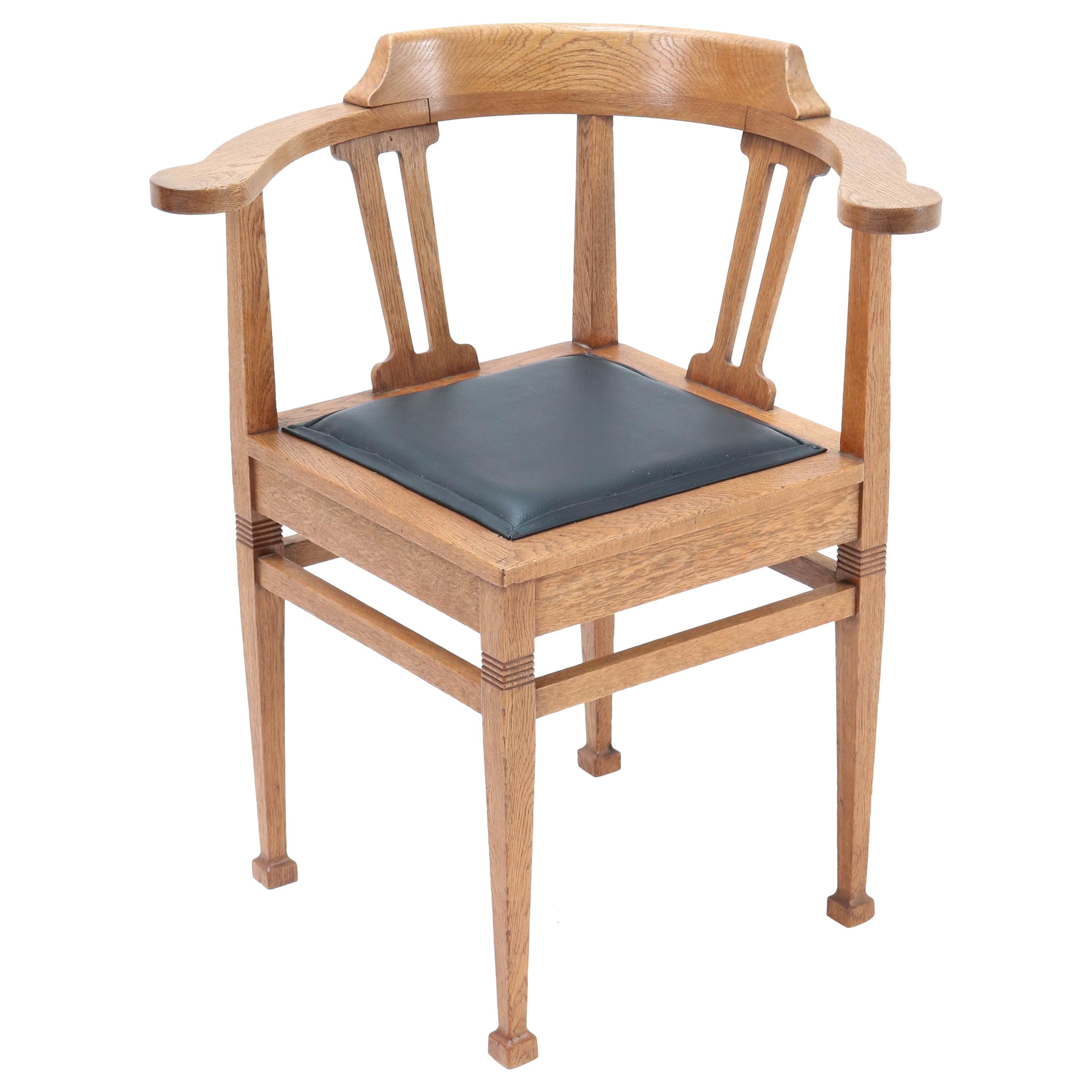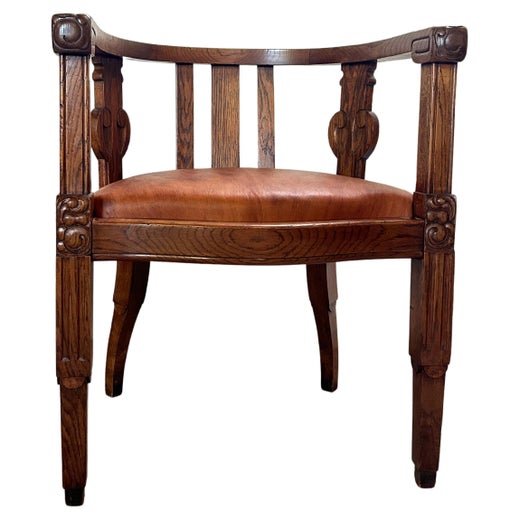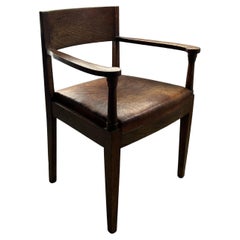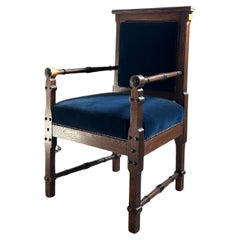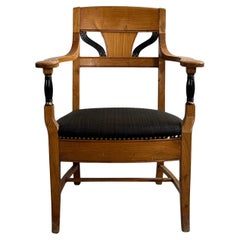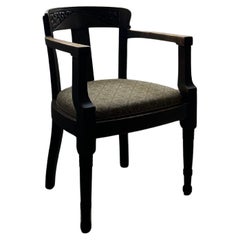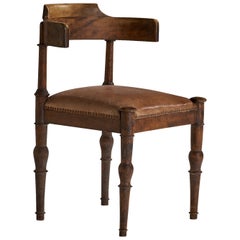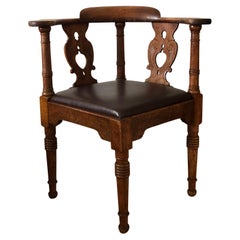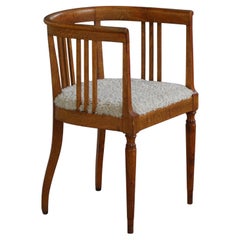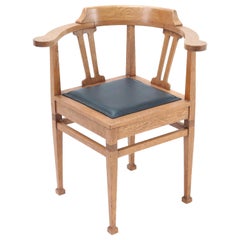Thorvald Bindesbøll Solid Oak Arts and Crafts Armchair, Denmark 1900’s
About the Item
- Creator:Thorvald Bindesbøll (Artist)
- Attributed to:Rud Rasmussen (Cabinetmaker)
- Dimensions:Height: 29.53 in (75 cm)Width: 24.81 in (63 cm)Depth: 19.3 in (49 cm)Seat Height: 18.9 in (48 cm)
- Style:Arts and Crafts (Of the Period)
- Materials and Techniques:
- Place of Origin:
- Period:1900-1909
- Date of Manufacture:1900’s
- Condition:Reupholstered. Wear consistent with age and use.
- Seller Location:Valby, DK
- Reference Number:1stDibs: LU6559240717892
Thorvald Bindesbøll
Over a century after his death, Thorvald Bindesbøll is remembered for his wonderfully artistic ceramic designs, smithed creations and imaginative lighting fixtures. The Danish architect, designer and artist brought a creative eye and meticulous hand to everything he made.
Born in Copenhagen, Bindesbøll’s early education was unconventional. His father, the famed architect Michael Gottlieb Bindesbøll, taught him at home. Growing up around his father’s students and colleagues, he was challenged to match them in intellect and artistic acuity.
In 1876, Bindesbøll graduated with an architecture degree from the Royal Danish Academy of Fine Arts. Instead of just focusing on architecture, Bindesboll developed a love of art, with a special emphasis on ceramics.
He worked for a time at Frauens Levarefabrik and then for Johan Wallmann from 1883 to 1890. Throughout the remainder of the 19th century, Bindesbøll collaborated with craftspeople from diverse disciplines, including ceramicists, silversmiths and goldsmiths.
Bindesbøll spent a great deal of time designing silver works. The success of these designs led to factories producing inferior copies.
Bindesbøll died in 1908, leaving behind numerous design sketches and an eclectic body of work that continues to be prized by collectors today.
On 1stDibs, find an array of vintage Thorvald Bindesboll decorative objects, lighting, serveware and more.
- ShippingRetrieving quote...Shipping from: Valby, Denmark
- Return Policy
More From This Seller
View AllAntique Early 1900s Danish Jugendstil Chairs
Leather, Oak
Antique 1890s Danish Arts and Crafts Armchairs
Velvet, Oak
Vintage 1910s Danish Art Nouveau Armchairs
Fabric, Elm
Antique Early 1900s Danish Arts and Crafts Side Chairs
Fabric, Oak
Antique Early 1900s Armchairs
Bronze
Antique 1890s Danish Arts and Crafts Chairs
Fabric, Oak
You May Also Like
Antique Early 1900s Danish Arts and Crafts Armchairs
Leather, Wood
Antique Early 1900s Art Deco Corner Chairs
Leather, Oak
Early 20th Century Danish Art Nouveau Armchairs
Lambskin, Wool, Oak
Antique Early 1900s Dutch Art Nouveau Corner Chairs
Leather, Oak
Vintage 1920s English Arts and Crafts Armchairs
Wood, Fabric
Early 20th Century British Arts and Crafts Armchairs
Leather, Oak
